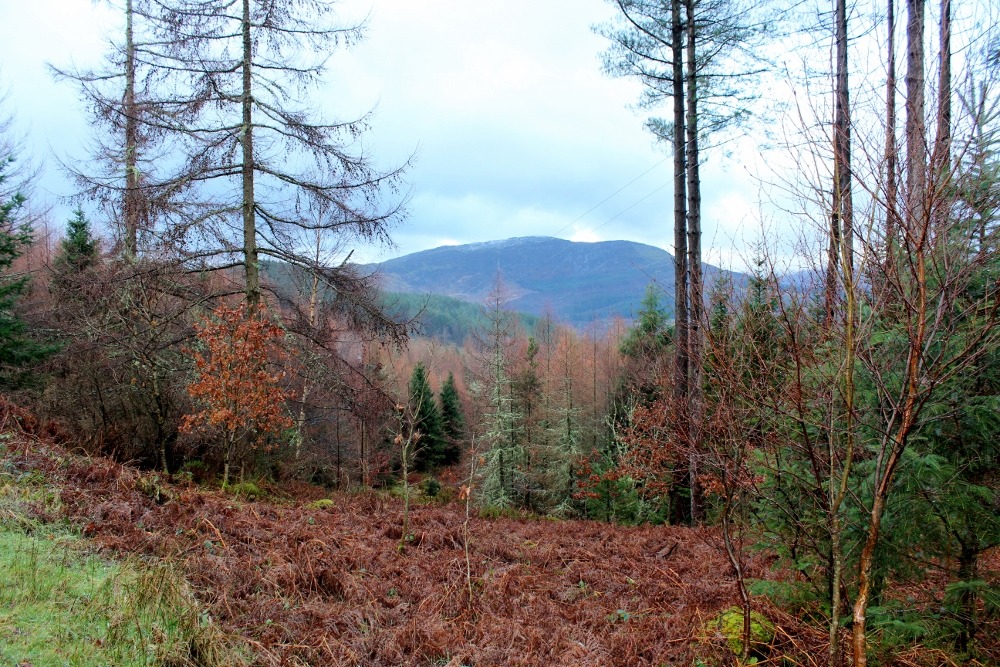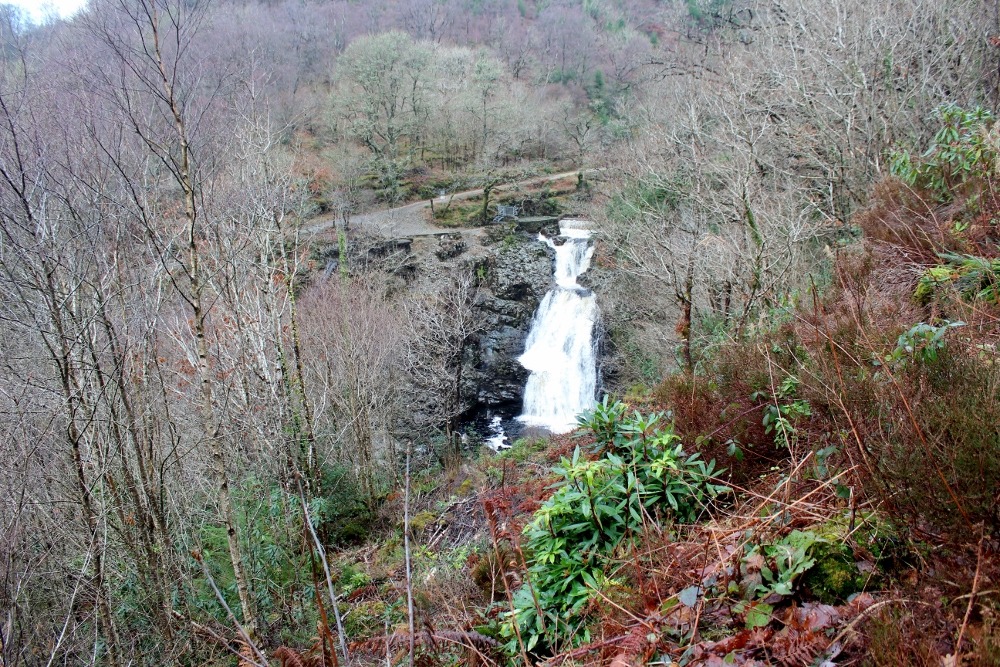There’s gold in them thar hills!
Gold deposits formed in North Wales following volcanic activity which took place roughly 500 million years ago. When the volcano Rhobell Fawr erupted out of the sea, it created a new land mass. The area we now know as Snowdonia National Park is mostly of volcanic origin. The metamorphoses of rocks and minerals during this huge volcanic event left Gwynedd with a generous supply of gold. The gold then lay buried in quartz veins for millions of years. If you are interested in the ancient volcanic activity, Get your walking boots ready! You can walk across land which was once the magma chamber of Rhobell Fawr by tackling the Volcano Trail in Coed y Brenin Forest Park. The park also features the Waterfalls and Goldmines Trail during which you will pass the remains of the Gwynfynydd goldmine.
Approximately 3,000 years ago, during the neolithic period, people began panning for gold in the region. Over the centuries, native Celts fashioned jewellery from the small amount of precious metal that had been recovered. Records suggest that the Romans also mined in the area following their invasion in AD47. Then, during the Industrial Revolution, operators mining for copper and lead struck gold at Gwynfynydd in 1860 and at Bontddu in 1862, sparking a gold rush in North Wales. The Gwynfynydd and Clogau St David’s Mines would go on to produce more than 123,000 troy ounces between them before they were closed.
VOLCANOES, GOLDMINES AND ROYALTY
The volcanic landscape
Volcanic eruptions can disrupt your travel plans and wreak destruction on both the landscape and communities. But they have also played a crucial role in shaping stunning landscapes that we all love to visit. When you walk in the Snowdonia National Park, the serenity of the views and the peaceful setting belie the upheaval of the distant past. The mountains are volcanic in origin and are the legacy of a time when North Wales was located where two tectonic plates converged. The plates were colliding and the resulting forces caused massive volcanic eruptions. A horseshoe-shaped area of terrain from the Lln Peninsula through Snowdonia to Cader Idris was created. This was at a time when Wales was 30 degrees south of the Equator.
As you wend your way through pretty valleys and ancient forests, it is almost impossible to imagine the incredible events that took place so many years ago. The site of the magma chamber beneath the Rhobell Fawr volcano is now a pretty footpath in Coed y Brenin Forest Park. Only the information board to the side of the trail enables you to visualise what you are standing on.
If you are concerned that there may be further eruptions, we can put your mind at rest. The Earth’s tectonic plates have moved considerably since Wales experienced the dramatic series of eruptions. Wales is now far from any plate boundaries and so there can be no collisions to generate the forces which cause eruptions. However, there is an old fault line beneath the Menai Straits which marks the ancient boundary of tectonic plates. This is why the area is prone to minor earthquakes. Our volcanoes are extinct but the Earth is still delivering the occasional seismic event.
The volcanoes of North Wales left us with the stunning mountains and also significant gold deposits which lay hidden for millions of years.

Coed y Brenin Forest Park

The site of the Gwynfynydd Gold Mine
The Gwynfynydd Gold Mine
Gold was discovered in the area in 1860 and the mine opened in 1884. By that time, the mine had been purchased by William Pritchard Morgan who was to become known as “The Welsh Gold King”. By 1888, two hundred people were working at Gwynfynydd, extracting gold by digging horizontal tunnels into the mountainside. You can still see the entrances to some of these in the Coed y Brenin Forest Park. Miners had to work in the tunnels by candlelight and the machinery they used was powered by water wheels and water turbines. The gold was found in quartz veins deep underground and life was tough for the miners.
You might be wondering how mining activities lead to water pollution. The problems occur when minerals deep underground, particularly iron pyrite, are exposed to the air due to the mining excavations. Iron pyrite, which is often found in the same locations as gold, is unstable at the Earth’s surface. When it is exposed to air and water, it decomposes into iron oxides and sulphate. The sulphate which is released from the decomposing pyrite then combines with water, producing sulphuric acid. Pyrite is also a natural source of arsenic.
The Clogau Gold Mine
Situated near Bontddu, the Clogau St David’s mine was one the largest in the Dolgellau region. Once a copper and lead mining operation, the focus at Clogau turned to gold in 1862. But the mine was wound down in 1911 only to be reopened several times in the 20th century. It last closed in 1998 but the current owners are hoping to begin production once more in the near future.
Gold veins in the region have proved difficult to locate and have yielded inconsistent results. However, it is hoped that advanced scanning technology will identify new seams of gold at this mine and possibly at other sites in the Dolgellau gold belt. The costs associated with both health and safety and preventing pollution have made mining expensive but Welsh gold is sold at a premium and so it is possible that the mine could become profitable once more.
Welsh gold and the Royal Family
In 1923, The Queen Mother used welsh gold to create her wedding ring. The gold had been gifted to the Royal Family by the Clogau Gold Mine and a portion of it has been used in in every royal wedding since the Queen Mother’s, including that of Prince Charles and Diana, Princess of Wales. But Welsh gold is now rare and it is not known how many more Royal Weddings will feature this most precious of metals. Such is the rarity of the Welsh gold that it can fetch up to 30 times the usual price of gold at auction.
You will see jewellery advertised as containing Welsh gold, but these pieces usually feature less than 1% Welsh gold. Here’s hoping that another gold rush in the near future ensures that more of the sparkly stuff is found in the mountains. Welsh gold is special and we need more of it!
If you feel tempted to go prospecting yourself, please be aware that you may be prosecuted. There is no law against panning for gold but the rivers in which it is found are conservation areas and you could fall foul of legislation which protects them from disturbance.


